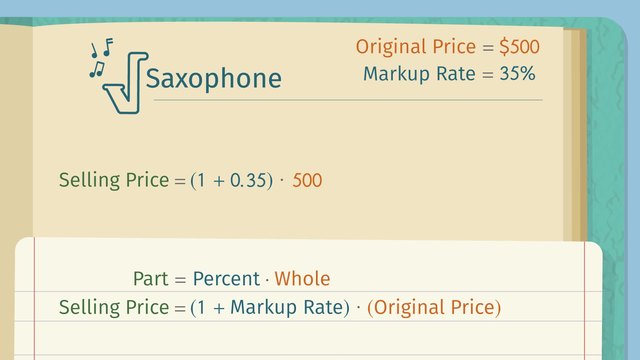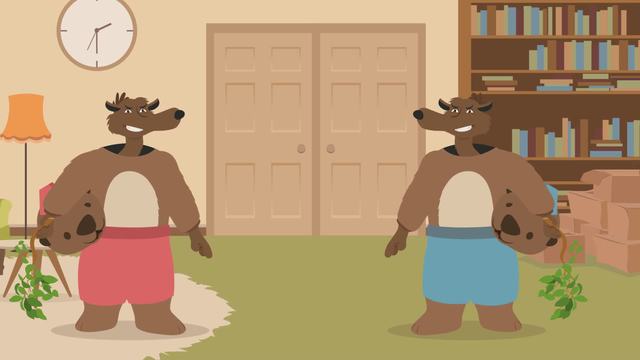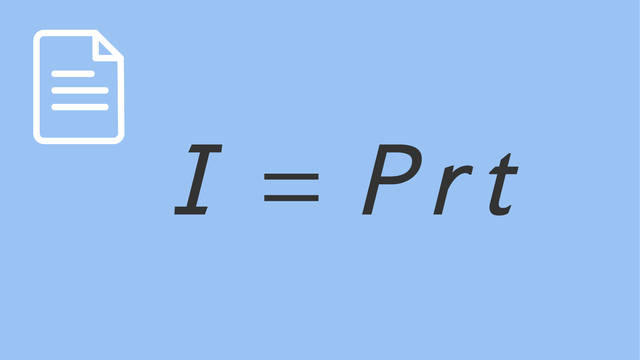Applying Percentages to the Real World


Basics on the topic Applying Percentages to the Real World
After this lesson, you will be able to solve real-world percent problems, like calculating commissions and tips.
The lesson begins with an introduction to commissions and an example involving commission on sales. It leads to another real-world percent problem, finding the tip on top of a final bill. It concludes with an equation that can be used to solve many real world percent problems.
Learn about real world percent problems by helping Harriet motivate the weasels at the amusement park!
This video includes key concepts, notation, and vocabulary such as: commission (the percent of a sale given directly to a worker in a commercial transaction); and tip (the money a customer pays on top of the final bill as a “thank you” for good service).
Before watching this video, you should already be familiar with how to solve problems involving percents.
After watching this video, you will be prepared to learn more about how percentages are used in real world situations, such as in scale drawings.
Common Core Standard(s) in focus: 7.RP.A.3 A video intended for math students in the 7th grade Recommended for students who are 12-13 years old
Transcript Applying Percentages to the Real World
On her daily tour of the summer timberland she manages, Harriet Otter passes the poorest-performing section of Otter This World: Western World. The Ranch Hands Restaurant looks like a ghost town, and the sunglass shop has seen better days. Look at this woeful weasel! Asleep on the job again!? Let's help Harriet get these weary weasels get off their keesters and working once again. In order to understand commissions and tips, we'll need to know how to Apply Percentages to the Real World. At the sunglass shop, it doesn't matter to the weasel if he sells 10 sunglasses or 10,000. He still gets paid the same. However, in some sales jobs, employers offer something called commission. Commissioned workers earn a certain percentage of every sale they make. For instance, let's say you earn a 5% commission on every pair of sunglasses you sell, and you sell a $10 pair of sunglasses. To figure out commission, you simply need to multiply the final sale price by the percentage of commission in decimal form, which, in our case, is 0.05. This mathematical equation means you earn $0.50 for every pair of $10 sunglasses you sell. But what if you sell a more expensive pair of sunglasses? You'd be right if you said that you'd earn more commission! Let's say the final sale price of a pair of sunglasses is $100. If we plug that into our equation and keep the same 5% commission, you'd earn $5 in commission! Surely, this idea will motivate the weasel do some work! Onto the next area of concern, the restaurant. The wait staff look more like wallflowers to me. Harriet's been thinking of ways to motivate her wait staff. Let's take a look at percentages as tips and see if this'll help Harriet whip those weasels into shape. If you've ever been to a restaurant, you know that you always get a bill at the end of your meal. A tip is the money a customer pays on top of his or her final bill as a thank you to the waiter or waitress depending on the quality of their service. Harriet plans to put up a sign to tell customers how much they should tip. For good service, customers should tip 10%; for very good service, customers should tip 15%; and for excellent service, customers should tip 20%. Let's see how much you should tip at the Ranch Hands Restaurant if the final bill comes out to $30. Just like when figuring out commission, when calculating the tip, we take a percentage of the final price. So, if the service is good, you should multiply $30 by the decimal form of 10%, which is, of course, 0.10, meaning we should leave a $3 tip on a $30 meal. For very good service, Harriet suggests a 15% tip. Substituting this in our equation gives us a tip of $4.50. And finally, for excellent service, we need 20% of the final bill, so we multiply by the decimal form, 0.20, giving us a tip of $6. Okay, to review. The process of calculating tips is the same as calculating commissions, multiply the final sale, or bill, by the percentage in decimal form. The difference between commissions and tips is: In commissions, the commission is calculated by the vendor, or seller; and comes out of the full price of the item being sold, while we have to calculate tips ourselves and must add the tip to the final bill. Harriet's curious to see how the weasels are working, so she decides to check out the restaurant. The tips sure have put a bounce in the step of the wait staff! What a quick turnaround!
What a quick turnaround. Harriet's got a tip for those wonky weasels, but I don't think they're gonna like it...














